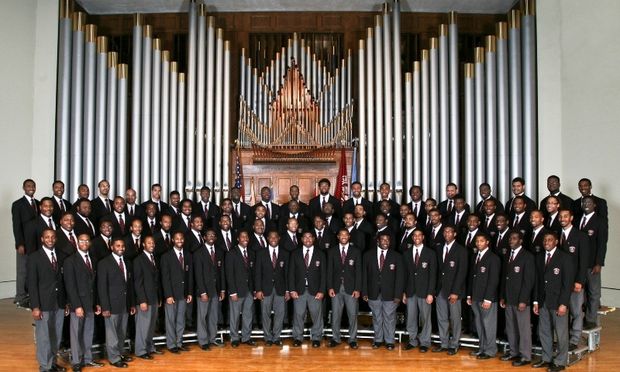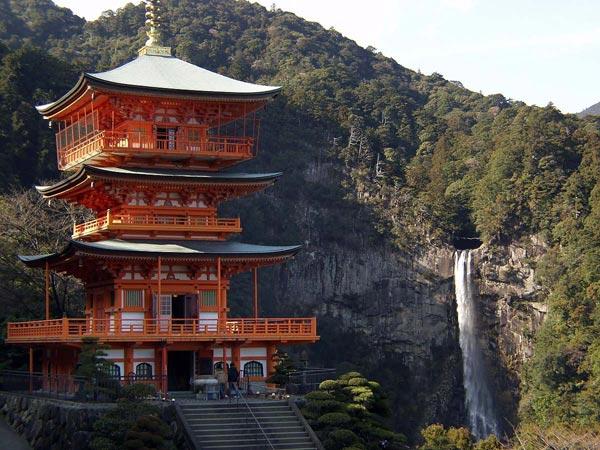Women make up just about half of the entire population of the human race but face a number of disadvantages imposed upon them by the opposite sex. In addition to less access to health care, poorer education and diminished wages, they are also banned from a number of different places and here are ten examples. Just to get this out of the way: you will find that most of the reasons given are religious in nature.
10. Burning Tree Club

9. The Head of a Fortune 500 Company
 Obviously, they’re not explicitly banned from being CEO, but women (as well as minorities) are so underrepresented in executive positions that it is effectively a ban. In 2013, there were a grand total of 22 women acting as CEO of a Fortune 500 company, which comes out to 4.4 percent. In addition to the lack of leadership roles for women, more than 25% of the companies studied didn’t even have any female executives. As far as money goes, men hold 92.5% of the highest paying jobs, which is a figure you can’t just chalk up to chance; it’s clearly an ingrained belief in the workplace and the country as a whole.
Obviously, they’re not explicitly banned from being CEO, but women (as well as minorities) are so underrepresented in executive positions that it is effectively a ban. In 2013, there were a grand total of 22 women acting as CEO of a Fortune 500 company, which comes out to 4.4 percent. In addition to the lack of leadership roles for women, more than 25% of the companies studied didn’t even have any female executives. As far as money goes, men hold 92.5% of the highest paying jobs, which is a figure you can’t just chalk up to chance; it’s clearly an ingrained belief in the workplace and the country as a whole.
8. Voting Booths
 Granted, this technically only applies to two countries: Saudi Arabia and Vatican City. In Saudi Arabia, women have no say in the election of their local and state government officials, a right which is happily being granted to them in 2015. King Abdullah, the head of one of the most rigidly Islamic countries, has been trying to get women involved in areas which don’t conflict with Sharia law. In regards to Vatican City, even though there aren’t actually voting booths or elections, there is one occasion in which voting is held: the election of a new pope. Since only cardinals under the age of 80 can vote, and only men can be cardinals under Catholic rules, women can’t vote in Vatican City. This one doesn’t look like it’s going to change any time soon.
Granted, this technically only applies to two countries: Saudi Arabia and Vatican City. In Saudi Arabia, women have no say in the election of their local and state government officials, a right which is happily being granted to them in 2015. King Abdullah, the head of one of the most rigidly Islamic countries, has been trying to get women involved in areas which don’t conflict with Sharia law. In regards to Vatican City, even though there aren’t actually voting booths or elections, there is one occasion in which voting is held: the election of a new pope. Since only cardinals under the age of 80 can vote, and only men can be cardinals under Catholic rules, women can’t vote in Vatican City. This one doesn’t look like it’s going to change any time soon.
7. Haji Ali Dargah Shrine
 Located just off the coast in Mumbai, India, the Haji Ali Dargah is a mosque, and tomb, dedicated to a 15th century merchant named Pir Haji Ali Bukhari, who gave up all his possessions and made a pilgrimage to Mecca. Made a saint in Sufism, an offshoot of Islam, Bukhari’s memorial was originally open to both sexes; however, in July of 2012, a fatwa was issued, denying women entrance to the inner sanctum, in accordance with Sharia law. While the decision was mostly met with begrudged agreement among the female patrons, a number of women’s groups have raised their voices in protest, demanding equal treatment. Rumors abound that it was because of an “inappropriately dressed” woman and not because an adherence to Islamic beliefs.
Located just off the coast in Mumbai, India, the Haji Ali Dargah is a mosque, and tomb, dedicated to a 15th century merchant named Pir Haji Ali Bukhari, who gave up all his possessions and made a pilgrimage to Mecca. Made a saint in Sufism, an offshoot of Islam, Bukhari’s memorial was originally open to both sexes; however, in July of 2012, a fatwa was issued, denying women entrance to the inner sanctum, in accordance with Sharia law. While the decision was mostly met with begrudged agreement among the female patrons, a number of women’s groups have raised their voices in protest, demanding equal treatment. Rumors abound that it was because of an “inappropriately dressed” woman and not because an adherence to Islamic beliefs.
6. Tour de France
 While competing against male cyclists would put them at a distinct disadvantage, the Tour de France is one of the only major sporting events without a female counterpart. (You could also say that about virtually every major American sport, with the exception of basketball.) Granted, there was one in the past, the Tour de France Féminin, but it was canceled in 2009. Despite increased pressure, the director of race refuses to budge on the idea of a female Tour, claiming the size of the men’s race is too prohibitive to allow time for a women’s race. In addition, the funds, either in sponsor money or public interest, may not be enough to force the change to happen.
While competing against male cyclists would put them at a distinct disadvantage, the Tour de France is one of the only major sporting events without a female counterpart. (You could also say that about virtually every major American sport, with the exception of basketball.) Granted, there was one in the past, the Tour de France Féminin, but it was canceled in 2009. Despite increased pressure, the director of race refuses to budge on the idea of a female Tour, claiming the size of the men’s race is too prohibitive to allow time for a women’s race. In addition, the funds, either in sponsor money or public interest, may not be enough to force the change to happen.
5. Morehouse College
 Located in Atlanta, Georgia, Morehouse College is the last remaining, non-religious, university in the United States which only allows male students. With graduates ranging from Spike Lee to Martin Luther King Jr., it has been a historically black school since its founding in 1867. Like many of the major universities in America, it started as an all-male school; however, it has refused to change with the times, maintaining its status as a segregated place of learning. Granted, there are at least 50 all-female colleges in the United States, lest you think only males can be excluding. The biggest reason given for the separation: men study better when they’re not trying to sleep with women. (I’m paraphrasing of course.)
Located in Atlanta, Georgia, Morehouse College is the last remaining, non-religious, university in the United States which only allows male students. With graduates ranging from Spike Lee to Martin Luther King Jr., it has been a historically black school since its founding in 1867. Like many of the major universities in America, it started as an all-male school; however, it has refused to change with the times, maintaining its status as a segregated place of learning. Granted, there are at least 50 all-female colleges in the United States, lest you think only males can be excluding. The biggest reason given for the separation: men study better when they’re not trying to sleep with women. (I’m paraphrasing of course.)
4. Ayyappan Temple at Sabarimala
 Located in Kerala, India, this is a pilgrimage site for the Hindu people. Honoring the god Ayyappan, and his defeat of the demoness Mahishi, the temple is open to men of all ages, although women who are not between the ages of 6 to 60 can enter. Basically, anyone that can have a period is barred from entering, which has been brought up in a number of controversial events involving transgendered pilgrims. Ayyappan is purported to be one of a number of “celibate” deities with a wandering eye; officials say women are banned from entering because the god might be drawn away from his shrine by their lady parts.
Located in Kerala, India, this is a pilgrimage site for the Hindu people. Honoring the god Ayyappan, and his defeat of the demoness Mahishi, the temple is open to men of all ages, although women who are not between the ages of 6 to 60 can enter. Basically, anyone that can have a period is barred from entering, which has been brought up in a number of controversial events involving transgendered pilgrims. Ayyappan is purported to be one of a number of “celibate” deities with a wandering eye; officials say women are banned from entering because the god might be drawn away from his shrine by their lady parts.
3. Iranian Soccer Stadiums
 This only applies to events in which men are participating because as Grand Ayatollah Fazel Lankarani said: “Women looking at a man’s body even if not for the sake of gratification is inappropriate.” Since the Islamic Revolution in 1979, women have been barred from various sporting events, even celebrations, although the rule was almost overturned in 2006, by President Mahmoud Ahmadinejad of all people. He was rebuffed by the Muslim leadership of the country. Ironically enough, the name of the largest stadium in Iran, Azadi Stadium, translates to “freedom”.
This only applies to events in which men are participating because as Grand Ayatollah Fazel Lankarani said: “Women looking at a man’s body even if not for the sake of gratification is inappropriate.” Since the Islamic Revolution in 1979, women have been barred from various sporting events, even celebrations, although the rule was almost overturned in 2006, by President Mahmoud Ahmadinejad of all people. He was rebuffed by the Muslim leadership of the country. Ironically enough, the name of the largest stadium in Iran, Azadi Stadium, translates to “freedom”.
2. Mount Omine
 Located in Japan, one of the highest mountains in the country is forbidden to women. Home to a Buddhist temple for over 1,300 years, Mount Omine has been home to a ritualistic gender separation, common to certain sacred sites in Japan. Stone pillars called kekkaiseki (no trespassing stones) mark the entrances to various Buddhist and Shinto areas, usually with the words “No women are allowed beyond this point” engraved on them, in Japanese, obviously. This rule persists, despite a ruling by the Japanese government in 1872, which outlawed the practice of sexual segregation. Even with the discrimination faced by the women of Japan, Mount Omine was granted World Heritage status by the U.N., in spite of pointed protest by various feminist groups.
Located in Japan, one of the highest mountains in the country is forbidden to women. Home to a Buddhist temple for over 1,300 years, Mount Omine has been home to a ritualistic gender separation, common to certain sacred sites in Japan. Stone pillars called kekkaiseki (no trespassing stones) mark the entrances to various Buddhist and Shinto areas, usually with the words “No women are allowed beyond this point” engraved on them, in Japanese, obviously. This rule persists, despite a ruling by the Japanese government in 1872, which outlawed the practice of sexual segregation. Even with the discrimination faced by the women of Japan, Mount Omine was granted World Heritage status by the U.N., in spite of pointed protest by various feminist groups.
1. Mount Athos
 Mount Athos is an island of the coast of Greece which has been home to Christian monks since the 5th century, as well as well as a number of monasteries. Women are banned from the island for two reasons. Firstly, the leaders of the monasteries want the monks to remain celibate and they fear that women being allowed would make that too difficult. (However, a number of women have successfully infiltrated their ranks, with a few even writing about their experiences.) Secondly, the Virgin Mary was said to have visited the island on her way to visit Lazarus and she claimed it for herself, blessing the inhabitants if they followed her command. There are quite a few icons dedicated to her currently on the island.
Mount Athos is an island of the coast of Greece which has been home to Christian monks since the 5th century, as well as well as a number of monasteries. Women are banned from the island for two reasons. Firstly, the leaders of the monasteries want the monks to remain celibate and they fear that women being allowed would make that too difficult. (However, a number of women have successfully infiltrated their ranks, with a few even writing about their experiences.) Secondly, the Virgin Mary was said to have visited the island on her way to visit Lazarus and she claimed it for herself, blessing the inhabitants if they followed her command. There are quite a few icons dedicated to her currently on the island.